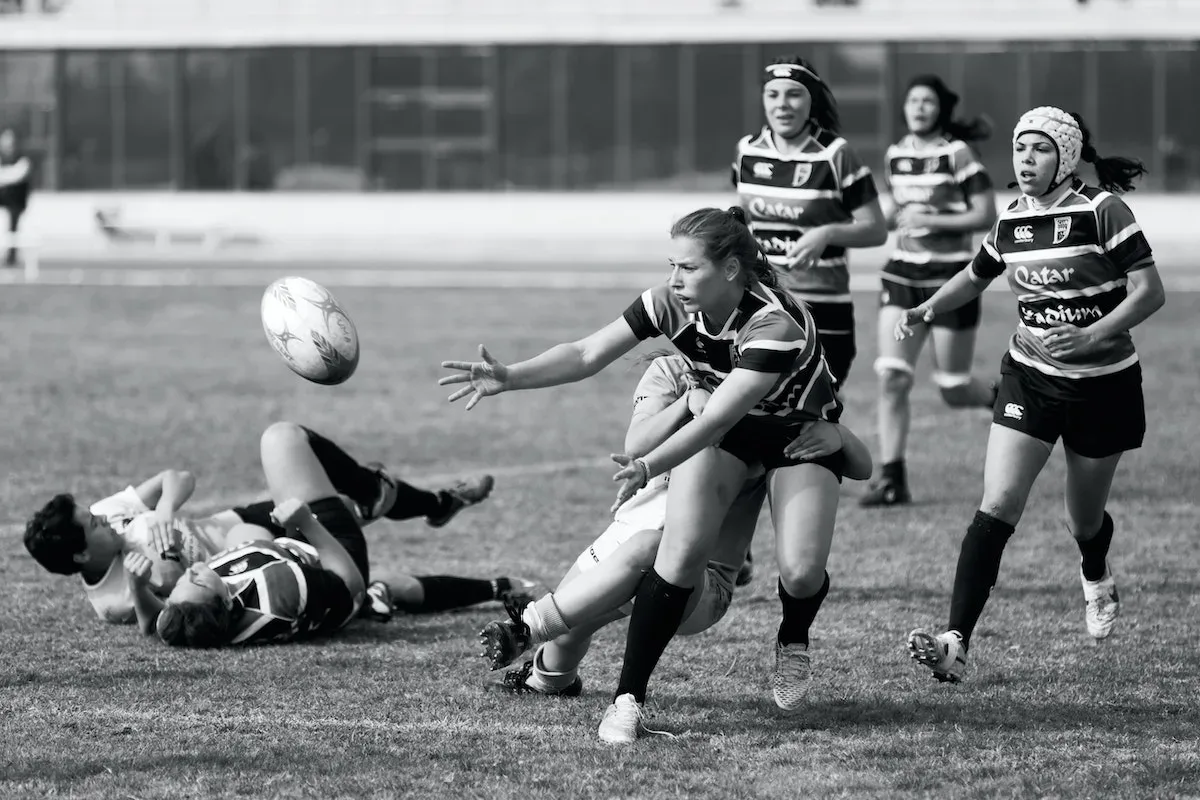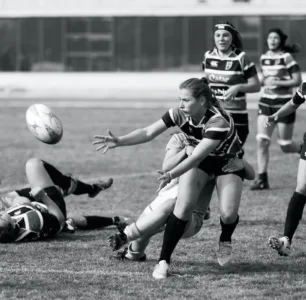Rugby is a physically demanding sport that requires strength, agility, and coordination. One of the key skills required to play rugby is the ability to tackle. Tackles are an essential aspect of rugby as they are used to stop the opposition from advancing and to gain control of the ball. There are several different types of tackles in rugby and each type has specific rules that must be followed. In this article, we will explore the different types of tackles in rugby and the rules that govern them.
What is the purpose of a tackle in rugby
The purpose of a tackle in rugby is to bring down an opposing player and prevent them from advancing with the ball. Tackles are used to gain control of the ball and to stop the opposition from scoring points. Tackles are an essential aspect of rugby as they play a significant role in determining the outcome of a game. By making a successful tackle, a team can gain possession of the ball and use it to attack their opponents. Tackles also disrupt the flow of the game, making it more challenging for the opposition to advance.
Driving Tackle
A driving tackle is a type of tackle used in rugby to bring down an opposing player. The tackler wraps their arms around the legs of the player being tackled and drives them into the ground. This type of tackle is used when the tackler is close to the player being tackled and when there is no opportunity for a front-on tackle. A driving tackle must be executed correctly in order to ensure the safety of both the tackler and the player being tackled.
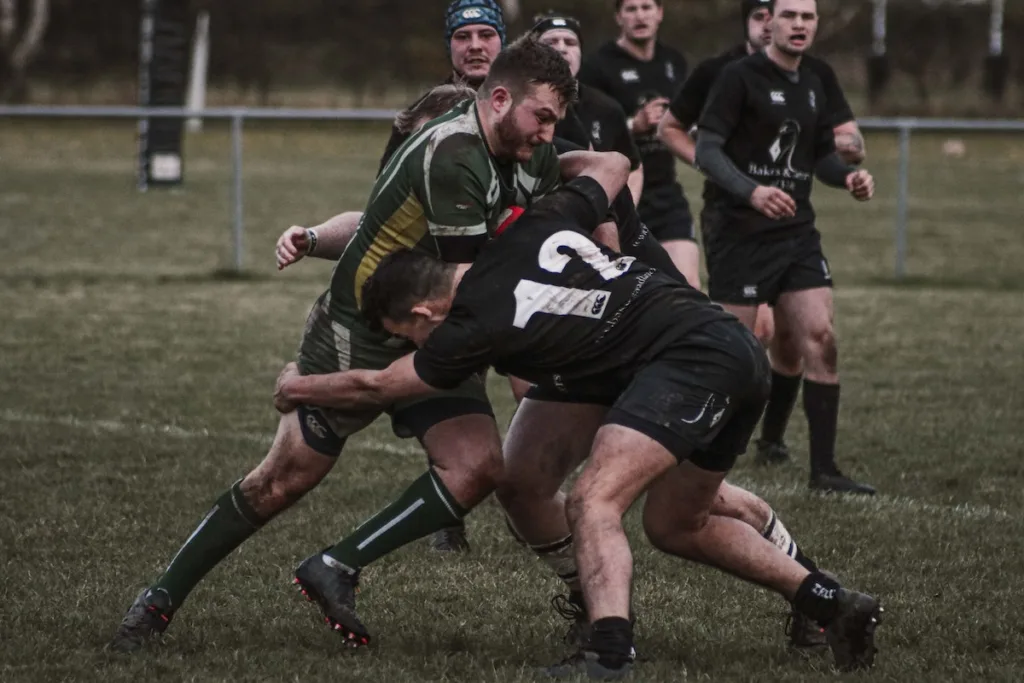
Front-On Tackle
A front-on tackle is a type of tackle used when the tackler is facing the player being tackled. The tackler must make contact with the player being tackled above the waist and below the neck. The tackler must wrap their arms around the player being tackled and bring them to the ground. This type of tackle is considered to be one of the safest types of tackles in rugby as it minimises the risk of injury to both players.
Side Tackle
A side tackle is a type of tackle used when the tackler is coming from the side of the player being tackled. The tackler must make contact with the player being tackled above the waist and below the neck. The tackler must wrap their arms around the player being tackled and bring them to the ground. This type of tackle is used when the player being tackled is moving quickly and is difficult to tackle from the front.
Scrabble Tackle
A scrabble tackle is a type of tackle used when the tackler is unable to wrap their arms around the player being tackled. The tackler must bring the player down to the ground using their body weight. This type of tackle is used when the player being tackled is moving quickly and is difficult to tackle from the front or side.
Rugby Tackle Rules
The rules that govern tackling in rugby are designed to ensure the safety of all players on the field. Some of the key rules include:
- The tackler must make contact with the player being tackled above the waist and below the neck.
- The tackler must wrap their arms around the player being tackled.
- The tackler must bring the player to the ground using their body weight.
- The tackler must not use their feet to trip the player being tackled.
- The tackler must not use excessive force when tackling.
- The tackler must not tackle a player who is off the field of play.
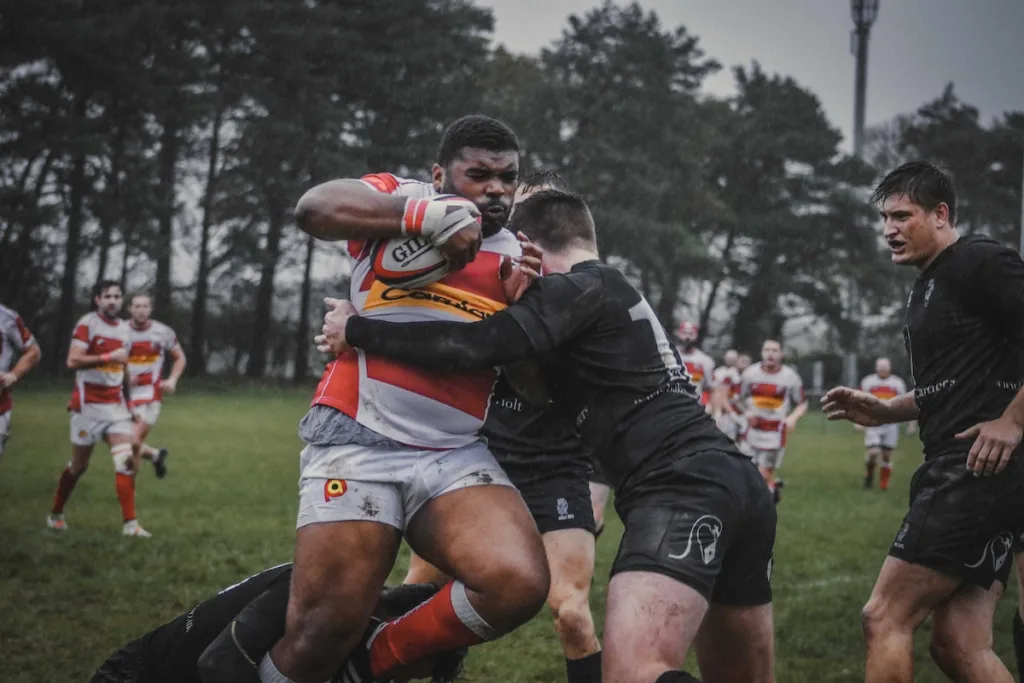
In conclusion, tackles are an essential aspect of rugby and are used to stop the opposition from advancing and to gain control of the ball. There are several different types of tackles in rugby, including the driving tackle, front-on tackle, side tackle, and scrabble tackle. The rules that govern tackling in rugby are designed to ensure the safety of all players on the field and must be followed by all players. Whether you’re a seasoned rugby player or just starting out, it’s important to understand the different types of tackles in rugby and the rules that govern them.
What does the call “tackle complete” mean?
The call “tackle complete” in rugby means that the tackle has been completed successfully and the player being tackled is on the ground. This call is made by the referee when the player being tackled has been brought to the ground and is no longer in possession of the ball. The call signals the end of the tackle and the start of the next phase of play.
After the call of “tackle complete,” the tackled player must release the ball and the team in possession of the ball must decide what they want to do with it. The next phase of play may involve a scrum, a lineout, or a maul, depending on the situation on the field.
In conclusion, the call “tackle complete” signals the end of the tackle and the start of the next phase of play in rugby. This call is made by the referee and signals that the player being tackled is on the ground and no longer in possession of the ball.
What types of tackle are illegal in rugby
In rugby, there are several types of tackles that are considered illegal. Some of the most common illegal tackles include:
- High tackles: Tackles that make contact with the player being tackled above the shoulder are considered high tackles and are illegal. High tackles can cause serious injury and are not tolerated in rugby.
- Dangerous tackles: Tackles that cause injury to the player being tackled are considered dangerous tackles and are illegal. This includes tackles that involve excessive force, tackles that use the feet to trip the player being tackled, and tackles that target the head or neck.
- Dumping tackles: Dumping tackles are tackles where the player being tackled is lifted off the ground and thrown to the ground. This type of tackle is illegal as it can cause serious injury.
- Neck rolls: Neck rolls are tackles that involve twisting the neck of the player being tackled. This type of tackle is illegal as it can cause serious injury to the neck and spine.
- Spear tackles: Spear tackles are tackles where the tackler jumps at the player being tackled and uses their body weight to drive them into the ground. This type of tackle is illegal as it can cause serious injury.
In conclusion, there are several types of tackles that are considered illegal in rugby. Tackles that cause injury to the player being tackled, involve excessive force, or target the head or neck are not tolerated in rugby. It is important for all players to understand the rules regarding tackling in rugby in order to ensure the safety of all players on the field.
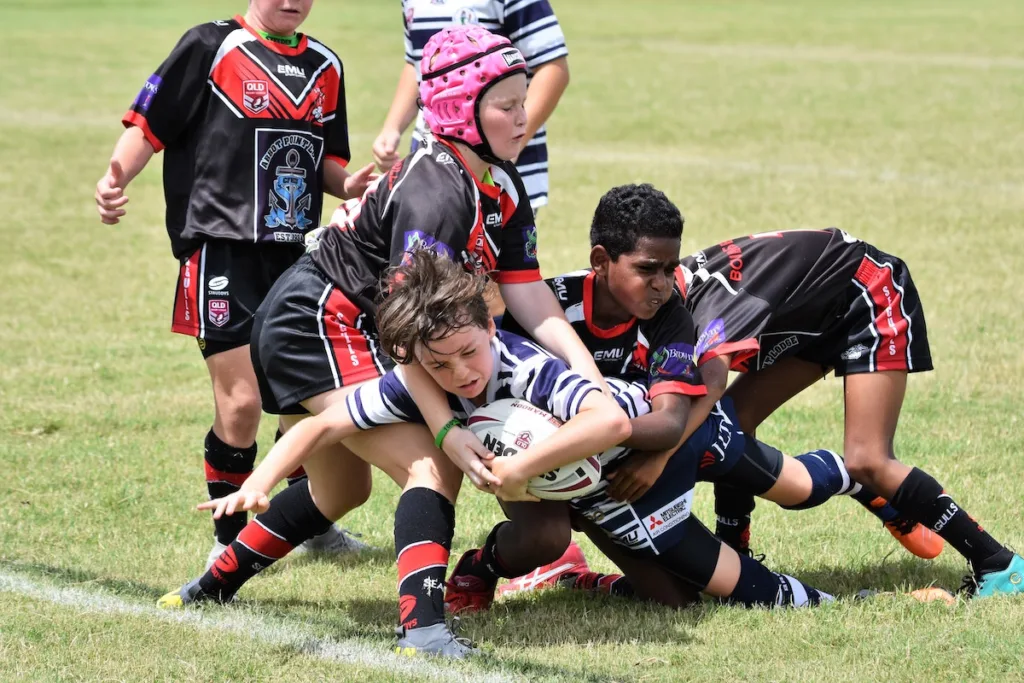
Is tackling dangerous?
Tackling can be dangerous if not performed correctly. Rugby is a physically demanding sport and tackles can result in serious injury if they are performed with excessive force or in a way that targets the head or neck. Players can also be injured if they make contact with the player being tackled in an illegal area, such as the head.
However, tackling can also be performed safely if players use proper technique and understand the rules regarding tackles. Players should be trained in proper tackling technique, and should be aware of the areas that are considered safe for tackles. Players should also be aware of the types of tackles that are considered illegal, as these tackles can result in serious injury.
In conclusion, tackling in rugby can be dangerous if not performed correctly, but it can also be performed safely with proper technique and knowledge of the rules. It is important for players to understand the importance of tackling safely in order to minimise the risk of injury and ensure the safety of all players on the field.
How can I learn to tackle safely
Learning to tackle safely in rugby requires proper technique and practice. Here are some tips to help you learn to tackle safely:
- Practise good form: Ensure that you are using proper form when tackling. Keep your head up, use your arms to wrap around the player being tackled, and bring them down using your body weight.
- Use your legs: When making a tackle, use your legs to drive into the player being tackled and bring them down to the ground.
- Make contact above the waist and below the neck: Ensure that you are making contact with the player being tackled in the correct area. Contact above the waist and below the neck is considered to be the safest area for a tackle.
- Avoid using excessive force: Using excessive force when tackling can result in injury to both players. Ensure that you are using enough force to bring the player down but not so much that it causes injury.
- Practice with a partner: Practising with a partner can help you to perfect your technique and ensure that you are tackling safely.
- Seek advice from a coach: A coach can provide you with expert advice and help you to learn to tackle safely. They can also help you to identify any weaknesses in your technique and provide you with tips on how to improve.
Remember, learning to tackle safely is an important aspect of rugby. Proper technique and practice will help you to tackle effectively and minimise the risk of injury to yourself and your opponents.
